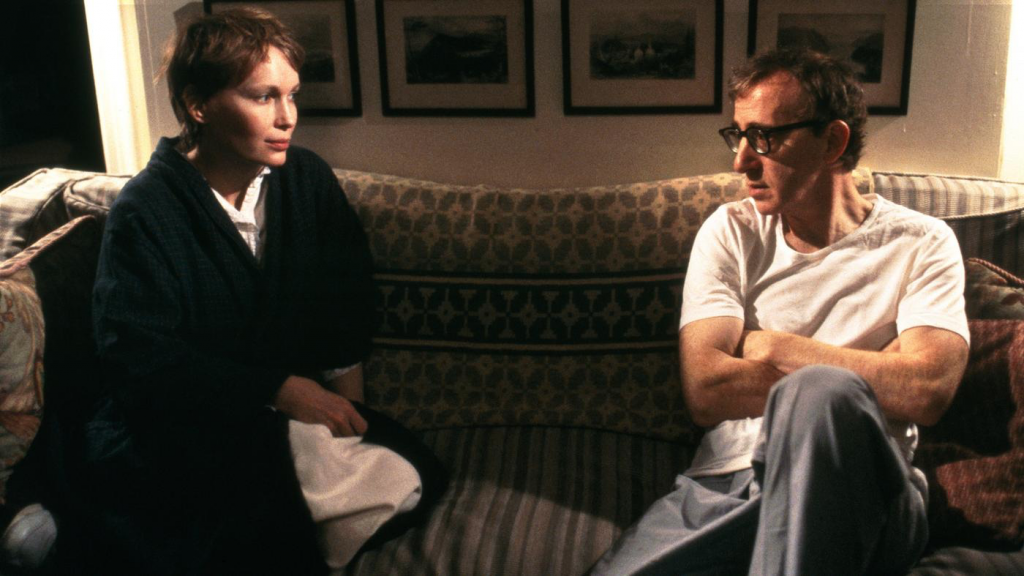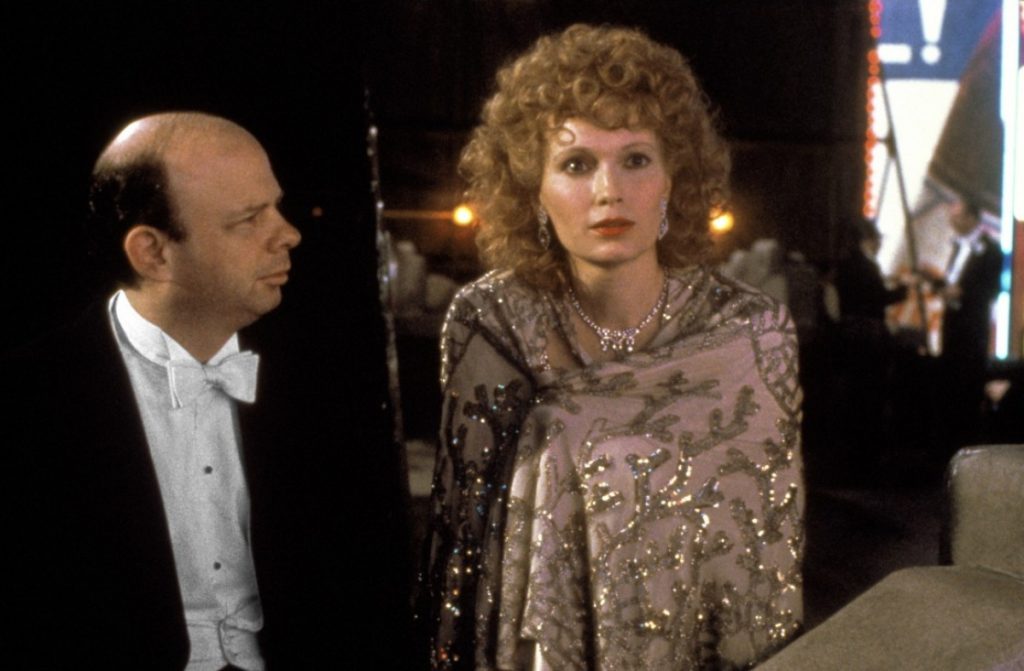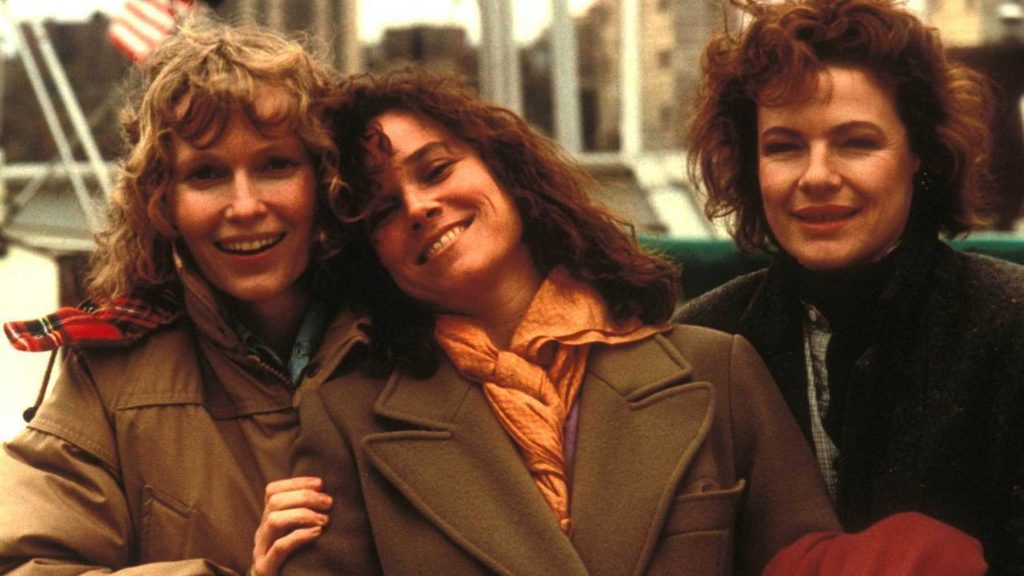
[ad_1]
For all his significance as a screenwriter, performer, comic, and musician, it may be simple for some to neglect what a splendidly gifted director Woody Allen is when he hits his candy spot. Stated candy spot is principally New York Dramedies, centered on the love lives and ethical quandaries of the center courses, and was hit with clockwork regularity through the late-Nineteen Seventies and 80s, a interval throughout which Allen’s prolificacy, consistency, and high quality was unmatched.
His standing as a distinguished voice in American movie was galvanized by the wildly influential Annie Corridor, which swept 4 of the 5 important Oscars in 1977 and stays the benchmark for romantic comedies. This development continued with classics reminiscent of Manhattan (1979), The Purple Rose of Cairo (1985), and Hannah and Her Sisters (1986). Certainly, Allen was nominated for Academy Awards with alarming frequency and has recorded 16 nominations within the Greatest Unique Screenplay prize to this point, applicable contemplating how delicately his scripts stability caustic wit with hefty themes. 1989’s Crimes and Misdemeanours sees these tones coalesce with startling readability: a movie of two intertwining tales, one a comedy, the opposite a deathly drama.
Along with his Brooklyn heritage and background within the worlds of New Orleans Jazz and stand-up comedy, Allen is, by all means, a homegrown American grasp, however his work nonetheless speaks of a deep-rooted understanding of European arthouse cinema. The names of Ingmar Bergman and Federico Fellini, specifically, come to thoughts, the previous influencing Interiors (1978, Allen’s first drama) and A Midsummer Evening’s Intercourse Comedy (1982), the latter Candy and Lowdown (1999) and Stardust Recollections (1980). That’s not to say that his work lacks originality, nevertheless. While Zelig (1983) and Husbands and Wives (1992) pioneered mockumentary storytelling, Deconstructing Harry (1997) sees Allen enjoying towards sort, as an alcoholic, pill-popping womanizer.
Within the twenty first century, Allen’s output has not slowed down, however his powers of high quality management have begun to wane. Hits such because the quaintly nostalgic Midnight in Paris (2011) have been outweighed by irrefutable duds reminiscent of Hollywood Ending (2002). There’s nonetheless a allure to his trendy works, however it’s to his heyday that his followers return, enwrapping themselves in his great worlds of escapism and romance, worlds we’ll additional discover on this rating of Woody Allen’s ten best accomplishments.
10. Husbands and Wives (1992)

The ultimate movie Allen would make with long-term collaborator and companion Mia Farrow earlier than their publicized separation, “Husbands and Wives” works as each a riveting piece of cinema, in the identical vein as all of its administrators greatest dramas, and as an nearly uncomfortably participating gaze by way of the trying glass into the difficult lives of its central couple.
Allen has at all times rejected autobiographical readings of his work, nevertheless it’s unimaginable to not interpret this Oscar-nominated effort as such, which makes use of a shaky-cam, speaking heads documentary aesthetic to current a sobering portrait of a mid-life romantic disintegration, the identical 12 months that its leads had been experiencing one themselves. Faraway from the auteur idea, the movie nonetheless works a deal with, as sharply noticed in characterizations and observations as ever, dissecting and interrogating the facade that one adopts in a relationship, even a long-lasting marriage. Moreover, Carlo Di Palma’s cinematography genuinely pushed the envelope ahead by way of the presentation of dramatic comedies on the time, and although Allen himself would by no means return to that exact model, its affect lingers massive on later generations.
9. Midnight in Paris (2011)

It’s no secret amongst Woody Allen followers and critics that the nice director’s output has faltered lately, too typically enjoying into the identical stereotypes and overplayed narratives, missing within the originality and intelligence of his best works. In a method, then, it made it all of the extra particular when the gorgeously realized Midnight in Paris premiered to rapturous applause at Cannes in 2011 and went onto spark one thing of a mainstream profession rival, highlighted by his fourth Academy Award win and, later, 2013’s equally acclaimed Blue Jasmine.
Associated to Woody Allen: Midnight in Paris (2011): A Theme Park Experience into Nostalgia and Paris
Although by all means a late-career work, the movie’s genesis dates again to the Nineteen Seventies, the place it seems as each a brief story and as an undeveloped screenplay, and it’s simple to see the place this mildly fantastical honest might have slot in with Allen’s “early, humorous movies” (ie someplace in-between Sleeper, 1973, and Love and Dying, 1975) however with 4 a long time of expertise beneath his belt, one feels as if Allen is healthier outfitted to remark upon the film’s themes of nostalgia, artistry, and longing. “Nostalgia is denial”, preaches Michale Sheen’s character Paul who, regardless of being the sometimes obnoxious pseudo-intellectual of the piece, is correct in that he foreshadows the worth of this in the end bittersweet lamentation on ages previous and pastures new, as Owen Wilson’s American write Gil Pender fails to seek out success in persevering with to enjoy borrowed nostalgia for a romanticized previous.
8. Radio Days (1987)

One other tackle nostalgia, Radio Days is a gem of a movie extracted from one among its director’s best possible intervals of labor and stays one among his most formidable and private tasks. Versus Paris within the Twenties, this model of nostalgia feels far nearer to Allen’s coronary heart, as he lovingly narrates this ode to an age the place the world of radio in New York Metropolis was the beating coronary heart of showbiz.
Shot once more by Di Palma in eternally interesting colours, illuminating the shining lights and exuberant put on of the early Nineteen Forties, the movie is a real train in nostalgia to an extent without delay shameless and pleasant. However whereas trendy media tends to outline nostalgia as a collection of icons, logos, songs, and references, Allen defines it as a extra common feeling, one thing intangible however by some means captured in each scene of the movie, which charmingly whizzes round recreations of the anecdotes and people tales that permeated all through the pop-cultural panorama. It was one of many first Woody Allen movies by which the director didn’t additionally seem in entrance of the digital camera, however as a soothing voice guiding the viewer by way of this world he has concocted, his acquainted persona is extra charming and endearing than ever, and his ultimate line stays one among his most potent: “now it’s all gone besides the reminiscences.”
7. Annie Corridor (1977)

There are extra achieved and transferring movies within the Woody Allen catalog, however none so pivotal to the route of cinema historical past than Annie Corridor, which reinvented the rom-com style with its endlessly witty screenplay, heartfelt performances, and opening monologue, by which a forthright Allen stares down the digital camera, inviting the viewers into a young, weak and infrequently hilarious delve into the psyche of Alvy Singer. Usually cited as one among American cinema’s best possible romances, it’s fascinating on a rewatch how Allen manages to dissect the connection between the 2 characters by dissecting them as people first.
Associated to Woody Allen: 10 Best Oscar Greatest Image Winner
We all know Alvy is neurotic and that Annie is eccentric, and the characters are developed so absolutely that it might be interpreted because the screenplay’s will for them to be seen solely as people, that their relationship is untenable — such differing and interesting personalities can generally coalesce into one entity, however right here they’re too enamored to be aside but too distinctive to remain collectively. Past all of the innovation, Annie Corridor is basically a movie of bittersweet decision; if solely they might deal with one another immediately.
6. One other Girl (1988)

Thanks partly to his stellar standup profession, and naturally the myriad comedy footage he has made all through his profession, the title of Woody Allen will almost definitely without end be related to neurotic, high-minded, and infrequently heartfelt humor, however for a time within the Eighties, the writer-director was proving himself fairly the dramatist additionally. 1988’s One other Girl sees this dramatist incarnation of Allen on the peak of its powers. Sandwiched between the Chekhov-inflected September (1987) and the finely tuned Crimes and Misdemeanours (1989), it’s maybe probably the most self-serious and drab providing of the auteur’s total filmography however manages to stay the touchdown as a deeply poignant piece of filmmaking because of a staggering central efficiency by Gena Rowlands and, as ever, Allen’s ingenious screenplay, in addition to his route, which switches protagonist Marion’s feelings from the concrete (her blunt narration) to the summary.
This mixed with Sven Nykvist’s lovely deep-focus pictures makes a powerful case for One other Girl additionally being Allen’s most formalist film, forging the parts of this character examine by way of craft alone, although the philosophical nature of a lot of his films on the time by no means strays removed from the lens. Because the narrative progresses, Marion’s capacity to inform the reality of her life from a play her ex-lover has written about her dwindles, and several other scenes of ethereal magnificence (backed by Erik Satie’s Gymnopédie) pay direct homage to perennial influences, Brecht and Bergman, evoking a stage of the cerebral unique to the medium’s extra subjective, purely emotional impulses.
5. Deconstructing Harry (1997)

Of all of the movies on this record, Deconstructing Harry is the least canonized amongst critics and audiences, however this bitter, acid-tongued journey down reminiscence lane stands because the final absolute masterpiece its director would ever make. An typically vulgar re-interpretation of Bergman’s Wild Strawberries (1957), Allen himself right here excels most in entrance of the digital camera, because the titular Harry Block, a pill-popping, depressive author whose literary success earns him honor on the very faculty he was as soon as expelled from, and embarks on a highway journey to the ceremony together with his kidnapped son, dying buddy, and an outspoken prostate.
Associated to Woody Allen: Allen And Cinema As The Opium of the Lots
Hardly probably the most typical of plots, however as soon as has already appreciated the hilarious one-liners and distinctive interaction between the performers on first viewing, upon revisiting one can absolutely have interaction with the breadth and depth of the problems Allen is coping with. In moments of innovation, we see Block discussing his travails together with his personal creations, themselves reflections of his psyche, his loves misplaced and previous lives lived. The ending is the deciding sucker punch: Block stands slouched, nearly paralyzed with despair, going through an array of his characters, purposefully resembling figures in his personal life, and realizes that the true great thing about his existence, underpinning and outlasting the hedonism and nihilism with which he surrounds himself, is his work, by which he can categorical true emotions and embolden the world.
4. Crimes and Misdemeanors (1989)

The skinny tightrope between drama and comedy is one thing that Woody Allen has constantly walked all through the years, and by no means with such delicacy and cerebral weight as in Crimes and Misdemeanors, whose construction is an nearly parodically literal interpretation of the ‘Dramedy’. Briefly, there are two conflicting tales: one a romantic comedy; one a deathly drama. On paper, they appear solely separate in tone and execution, however by way of a few of his smartest dialogue and narrative ordering, they coalesce into a wonderful entire. The numerous thematic punch of the image is emphasised by a very stark ending, the best in Allen’s filmography, by which Allen and co-star Martin Landau lastly cross paths.
Many movies on this record increase bigger than life philosophical, existential questions on existence, conduct, love, guilt, romance, however depart them largely, purposefully, unanswered. In Crimes and Misdemeanors Allen lastly gives one thing of a solution, not one I’m prepared to spoil, however one that means that if there’s a God is he actually one value worshipping in a world of such hatred and unhealthy luck? This query is raised with a sometimes deft contact and bolstered by Sven Nykvist’s impeccable cinematography and least half-a-dozen performances of talent and nuance. Rightfully thought-about one among his best achievements.
3. Stardust Recollections (1980)

From Greenaway’s 8 1/2 Girls to Fosse’s All That Jazz, many a filmmaker’s inventive flame has been set alight by the magic of Fellini’s landmark 8 1/2, although solely Allen’s Stardust Recollections has come near capturing the magic of the unique. The author-director achieves this by way of boldly bare self-reflection, casting himself as Sandy Bates, an acclaimed comedian-cum-director preventing for his sanity’s survival in a weekend on the titular Stardust lodge. To date, so Fellini. However by imbuing this humorousness and great understanding of human relationships Allen manages to glitter the required, titular, stardust onto the screenplay, creating a wholly new work that transcends pastiche and lampooning and turns into an important entry into his filmography. The movie was met with essential befuddlement in its day, even from shut buddy Pauline Kael, nevertheless it’s telling that Woody himself, so lengthy a vehement critic of his personal work, has at all times harbored a comfortable spot for Stardust.
Associated to Woody Allen: 6 Greatest Federico Fellini Films
In his autobiography, he as soon as once more dissuades viewers from an autobiographical studying however does remark upon the fraught triad of critics, followers, and artists that comprise the movie trade. Many critics of the time complained of a supposedly boastful Allen utilizing his platform to bemoan his personal fanbase who help him, however he was attempting to level to a way more refined argument concerning the risks of parasocial relationships between artists and audiences, albeit in the obvious method attainable as Sandy Bates is shot by his personal admirer. Shortly after the movie’s launch, John Lennon was shot, making Allen really feel vindicated in his personal commentary on the unhappy state of the world of superstar. In the end, although, Stardust Recollections is a movie of luxurious visible magnificence and bittersweet romance — a story of warning and commentary fairly than abject nihilism.
2. Hannah and Her Sisters (1986)

Woody Allen’s warmest, most life-affirming movie, Hannah and Her Sisters has a deserved place within the canon of ‘80s cinema as a masterpiece of human interplay and nuanced emotion, woven intricately by way of a number of overlapping storylines, every centered on a member of an prolonged New York household. Buoyed by Carlo Di Palma’s attractive deep-focus cinematography and an array of marvelous performances (each Dianne Wiest and Michael Caine gained Oscars for his or her roles), the screenplay (one other Oscar winner) is really masterful in the best way it balances tone, thematic weight, and the time spent with its central characters. Every scene is extra riveting than the subsequent, however the true great thing about Allen’s movie is discovered not in its plain technical prowess however the pure emotional resonance and common great thing about the screenplay and the way it’s delivered.
Probably the most impactful instance of this can be a well-known monologue delivered by Allen’s depressive TV producer Mickey, detailing his brushes with suicide and eventual enlightenment on the film theatre, a speech so potent it reaches past Woody’s typical model of cynicism and snark and right into a realm of hope for the world and existence. Purchase and huge it has the same message to the extra bitter Deconstructing Harry however is offered with way more heat and appreciation for its characters, consultant of a distinct time in Allen’s private {and professional} life: an ideal coalition of all his best traits as a author, director, and performer.
1. Manhattan (1979)

Put merely, Allen’s masterpiece. Shot in attractive black-and-white by Gordon Willis, made to evoke protagonist Isaac’s childhood reminiscences, Manhattan is a pleasant, bittersweet ode to youthful girls, promiscuity, and the New York borough it was named after. It’s maybe the perfect abstract of Allen’s most prevalent thematic touchstones but additionally greatest exemplifies his skeptical worldview, which as soon as blown onto the most important of screens within the prettiest of colours, turns into wondrous. The story of a middle-aged man’s back-and-forth relationships together with his greatest buddy’s mistress (Diane Keaton) and a 17-year-old scholar (Mariel Hemmingway), the movie tackles an especially taboo material with out passing judgment or preaching to the viewers.
Associated to Woody Allen: 20 Greatest Films About Writers
Slightly than being a celluloid op-ed, it’s an observant piece, however to not the extent the place Allen and co-writer Marshall Brickman ever lose a real emotional reference to the characters. Each central romances could also be inherently doomed, but they really feel so genuine and uncooked of their dialogue (the witty exchanges, quotable one-liners) that the viewers believes absolutely of their ardour, and engaged within the chance that one among them would possibly come good. It’s a few of Allen’s very smartest screenwriting, and it advantages from the grand cinematic scope of the undertaking, regardless of the comparatively small-scale of the undertaking. Many Allen movies, for all their brilliance, might work nearly simply in addition to radio performs or within the theatre, however the cinematography, modifying, and swooning music of Manhattan are actually emblematic of the ability of the medium, and a testomony to the wonder and variety of its titular location. One of many best photos of the human coronary heart and the cityscape ever captured.
Woody Allen Hyperlinks: IMDb, Wikipedia
[ad_2]
